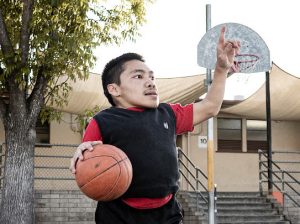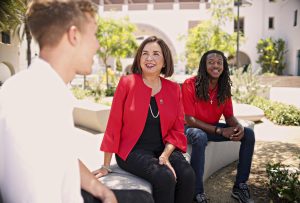
According to an article in A Cancer Journal for Clinicians, 89 percent of women diagnosed with breast cancer in Western countries are still alive five years after. This is because of early detection and treatment.
San Diego State was part of the awareness program on Oct. 18, when SDSU sororities raised money for breast cancer research and the Parma Payne Goodall Alumni Cen- ter hosted the “Think Pink” event.
According to the Helen Knoll Foun- dation website, the event was meant to “memorialize the life of Helen Knoll, who passed away at 43 years of age after two long battles with breast cancer … and to help women of any age receive information and affordable access to the latest can- cer screening technologies.”
Early detection of breast cancer is vital because if detected in an early stage, the cancer can be treated with operations and chemotherapy. My mother is a breast cancer survivor. She had regular screen- ings but it was she who, through self-detection, suspected something was wrong. After being diagnosed with breast cancer, my mother underwent multiple operations and radiations. Even though her life will never be the same, awareness saved her. Five years later she is now cancer-free.
The Worldwide Breast Cancer Organization offers useful guide- lines for detecting breast cancer. Women who find a lump in their breast, should visit a doctor, who will most likely recommend a mam- mogram and X-rays. The doctor will also perform a biopsy by tak- ing a sample of cells from the lump, to aid in a diagnosis.
Women should not only get mammograms, but should also self-examine at home. The problem, however, is many women don’t know what to look for. Worldwide Breast Cancer organization speci- fies a cancerous lump in a breast will be as hard as a lemon seed and won’t move.
Rahada Chitale, from ABC News, summarized Dr. Ann Pattige of the Young Women Breast Cancer Program, “The chances of a woman getting breast cancer in her thirties is one in 250. In her 20s it is one in 2,000. The chances decrease the younger a woman is.”
Women of all ages need to be aware of breast cancer. Young women should not believe their age protects them from risk. Accord- ing to breastcancer.org, some risk factors to consider include obesity, genetics and exposure to chemicals in plastics. Obese individuals have a higher risk of being diagnosed with breast cancer compared to individu- als at a healthy weight. Exposure to chemicals such as Bisphenol A. more commonly known as BPA, may also be a risk.
It is useful to be informed about family medical history. According to breastcancer.org, “A woman’s risk of breast cancer approximately doubles if she has a first-degree rela- tive (mother, sister, daughter) who has been diagnosed with breast cancer.”
It is very common for people to say, “It won’t happen to me.” However, the most unexpected things can happen to anyone. There are ways to get educated and treated for breast cancer. We can’t influence genetics, but we should actively seek to influence risk factors that can be manipulated by our actions. Take your health into your hands and start living pink.









